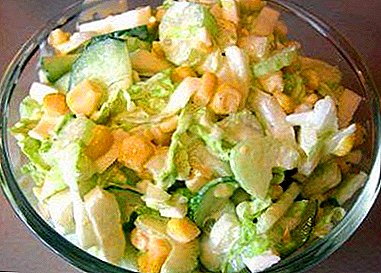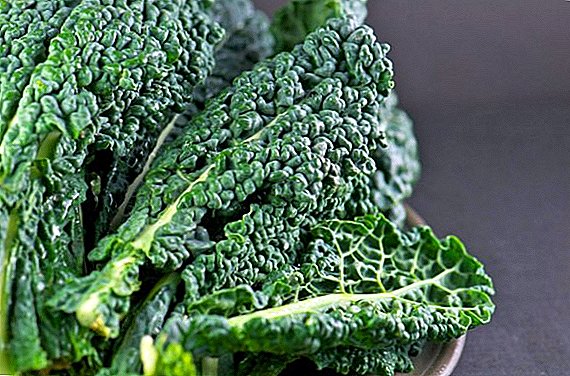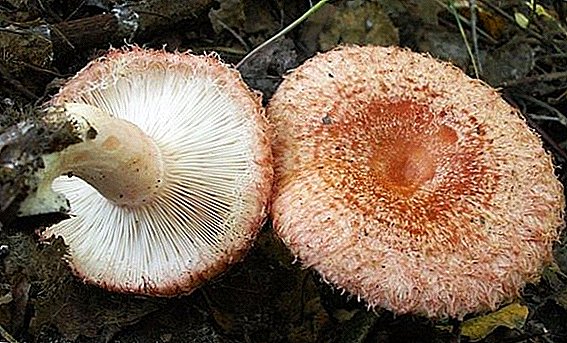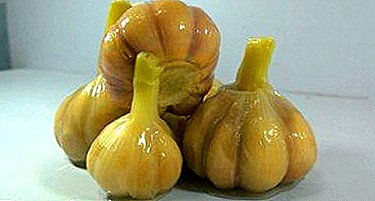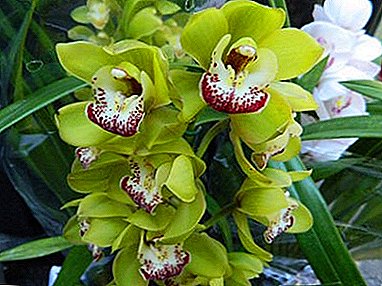 Surely, you saw fluffy white rabbits with black ears, a black spot on the nose and the same legs. They are impossible not to admire! Yes, this is the famous Californian rabbit! Everyone would like to have such a beautiful pet!
Surely, you saw fluffy white rabbits with black ears, a black spot on the nose and the same legs. They are impossible not to admire! Yes, this is the famous Californian rabbit! Everyone would like to have such a beautiful pet!
This breed is ideal for industrial breeding, it is highly productive, the poem of such rabbits is propagated to produce dietary meat and splendid fur. Breed is considered broiler. Production efficiency largely depends on skillful selection and on competent care. We will talk about how to properly breed and maintain these animals in this publication.
Short description
 It is impossible not to admire the beautiful and playful snow-white rabbits with dark ears and spout! This is a famous Californian breed, which is famous for its fertility!
It is impossible not to admire the beautiful and playful snow-white rabbits with dark ears and spout! This is a famous Californian breed, which is famous for its fertility!
Such animals are kept as pets, and as breeding livestock, for industrial breeding. Rabbit breeding is one of the progressive branches of the domestic economy, as well as the foundation of a successful business for many entrepreneurs.
With proper care, animals grow quickly and look great. How to take care of them, we will tell in this article.
Description
The breed was bred in the USA, it was the result of a complex selection work of American specialists who crossed the New Zealand white breed, Russian ermine and large chinchilla.
The new breed very quickly deserved popular recognition for its beauty and high productivity. Such rabbits are well adapted to the conditions of the Russian climate and feel great in captivity. They were first brought to Russia in 1971.
Experts believe that the main advantage of the breed is early maturity, the females are ready for fertilization already in the fifth month of life. In the first litter, they bring 9-10 full rabbits. Slaughter condition they reach in a short time.
This breed is valued for its high dietary characteristics of meat and first-class fur. If you compare with other breeds, then the output of the soft part of them is the largest. At the same time the meat is very tender and unusually tasty. Therefore, they are considered broiler breed.
Appearance
 These are attractive animals of white color, against which dark brown (almost black) ears, paws, tail and tip of the nose stand out. This sturdy, stocky animal weighs an average of 4.5 kg. The heaviest individuals reach 5.5-6 kg. Breed attributed to the medium.
These are attractive animals of white color, against which dark brown (almost black) ears, paws, tail and tip of the nose stand out. This sturdy, stocky animal weighs an average of 4.5 kg. The heaviest individuals reach 5.5-6 kg. Breed attributed to the medium.
Such rabbits have thin bones, a wide chest, a strong back, a relatively small body, and thick, shiny, high-density fur.
The musculature of all individuals is well developed in any part of the body, the neck is short almost unnoticeable, therefore the head is slightly raised.
The fur of the animal is dense, much thicker than in other breeds, it is coarse and does not create a feeling of fluffiness. Mezdra is somewhat thick and rather dense, hair is snow-white with shine. On the neck of animals sometimes there are white spots. Fluffy ears are straight and not very long (no longer than 10, 5 cm), red-pink eyes, they are always clear in healthy individuals.
They have a playful character, while they are calm and friendly. Even despite the hypertrophy of meat forms, the males retain a high activity, and the females have a high fecundity and bring 8-10 rabbits in one litter, while the nest oscillations are insignificant. This favorably distinguishes the breed among all others.
Productivity
This breed inherited a high fecundity and milkiness from the Russian ermine rabbit (because it was created on the basis of broiler breeds). The live weight of a 2-month-old young stock reaches 1.8 kg, individual well-fed individuals can weigh 2 kg or 2.3 kg, at 3 months they weigh 2.6 kg or 2.7 kg. Often, 4-month-old rabbits weigh more than 3 kg, 5-month-olds weigh 4.2 kg. Further, the period of their active growth ends.
Fenders pay attention that the feed consumption per gain of one kilogram of live weight accounts for up to 3.5 kg or 4.5 kg of feed units, while the slaughter yield is 60%, with meat - 82-85%, fat -1.8-2.5%, bones - 13-15%, while getting white shiny skins of medium size.
Features breeding, care
 The Californian breed is famous for its high adaptive abilities; therefore, it is successfully bred both in the south and in the north. They easily tolerate frosts thanks to their fluffy paws.
The Californian breed is famous for its high adaptive abilities; therefore, it is successfully bred both in the south and in the north. They easily tolerate frosts thanks to their fluffy paws.
It is believed that the best place to keep fluffs is a specially equipped room in which a suitable microclimate is created. When nested separation they are lodged in spacious cells. 120Х60Х60 cm. Soft legs allow animals to feel great on the mesh floors in the mechanized rabbit. Laying in the cells is not necessary to arrange. For fur carefully looked after. The content in the shed conditions is also a wide and successful practice among domestic and foreign fur farmers. Rabbits are sold to both individuals and fur farms.
At home, such beautiful animals contain larger cages than dwarf rocks. The main difficulty of home care is to keep the fur in excellent condition, besides, if you are going to have such beauty at home, then remember that the animal does not live well with children. The rest of their care has no features and difficulties. Without delivering special troubles to the owner, these pets with a bright appearance will be pleasing to the eye for about 10 years (this is the average duration of their life).
Virtues
 Californian breed is considered the best meat-burbler in the world, it ranks third among modern meat breeds. With the right content, the yield of breeding Californian rabbits significantly exceeds the profit from breeding giant rabbits.
Californian breed is considered the best meat-burbler in the world, it ranks third among modern meat breeds. With the right content, the yield of breeding Californian rabbits significantly exceeds the profit from breeding giant rabbits.
The main breed advantages include:
- precocity (ready to mate as early as 5 months);
- high fecundity (for the year the female can bring about 40 units of offspring);
- deadlines to achieve lethal form.
disadvantages
Breed has both advantages and disadvantages, among them distinguish an acceptable group and unacceptable.
Acceptable defects include:
- disproportionate body;
- elongated neck and head;
- ears set apart;
- weak and thin legs;
- slight deviations from the normal length of hairs, elasticity and silkiness of the fur;
- the dull and blurry color of the nasal mask;
- unwanted hair pigmentation on the neck, under the eyes, near the anus or nipples;
- yellowness of fur;
- eye color and claws slightly deviated from the norm.
- low weight (it should not be lower than 3, 5kkg);
- fattening (individuals should not be heavier than 5, 5 kg);
- large sizes of nasal pigmentation (upper border near the eyes);
- violation of the characteristic pigmentation (white spots appear dark spots, and vice versa, white spots appear where there should be dark color);
- the fur is dull, not thick, not silky;
- original color of eyes and claws (not characteristic of the breed);
Feeding features
 As for food, representatives of this breed are very selective, especially young animals. The calorie content of the food of young rabbits should be high, so the farms use high-protein (protein) feeds, as well as starter packs for young rabbits (if not, then feed is enriched with additives of animal origin). It is useful to feed dairy products, as well as fish meal or meat flour. Be sure to give oil shorts and cake. In order to optimize the processes of digestion, using probiotics, they will allow you to better absorb food.
As for food, representatives of this breed are very selective, especially young animals. The calorie content of the food of young rabbits should be high, so the farms use high-protein (protein) feeds, as well as starter packs for young rabbits (if not, then feed is enriched with additives of animal origin). It is useful to feed dairy products, as well as fish meal or meat flour. Be sure to give oil shorts and cake. In order to optimize the processes of digestion, using probiotics, they will allow you to better absorb food.
Broilers are fed without restrictions; they give as much as an animal is able to eat, while at the same time providing access to fresh drinking water. It should not be icy, it is heated to room temperature.
Okrol
In one area, a female brings 8-10 babies of 45 g each, they have a great energy of growth (the approximate average daily gain in live weight is 40-45 g). Newborns are white in color and completely naked, they develop pigmentation with age. The weight of the cubs depends on their number in the litter. Animal breeds state that females most often bring full viable litter in winter, in the rest of the year newborns may have developmental abnormalities (such individuals do not reproduce).
Californian females are caring "dairy" mothers (they gently fold newborns in one place and cover with down) If okol compacted, then the female is able to bring up to 35-40 babies per year! Females who bite babies or scatter around the cage are rejected.
Tribal better to do rabbits, which appeared from 1.2 or 3 around. For breeding, females with high maternal qualities are chosen, because large and fertile females who do not care or take bad care of their offspring often lose babies (they die). Among males, priority is given to healthy strong and active individuals. Individuals retain high reproduction rates up to five years of age.
Pregnancy of females lasts no more than a month. When farmer breeding, rabbits, it is important to promptly disband by sex. Do it after puberty, which occurs in them after 3 months. This step allows you to avoid spontaneous coatings that lead to unwanted ocroles of related relationships.
In addition, there are fights between males, stronger individuals can gnaw at the opponent's testicles.
In order to correctly determine the sex of animals, it is necessary to examine their genitals. Externally, male and female individuals differ little, especially at three months of age. At the time of birth - this is difficult to do, experienced animal producers can determine the sex of 2-week-old babies with a 100% guarantee, in standard cases they evaluate puppies of one month of age. The older the individual, the easier it is to determine its sex (by direct, indirect and secondary features).
Animals (preferably not older and not younger than 3 months) must be turned over on their back, holding the neck and tail to press on the area at the anus.
The females will have an original loop with a tongue (pink - in young, and red - in adults), under it there is a small slit, which narrows towards the tail.
The males are clearly visible little white cylinder with a hole at the top. The older the individual, the larger the size of its genitals. In adult males, the tip is modified with age: it swells slightly, bends slightly, and its shape resembles a bullet.
In order to maximize the quality of okol, it is important to take full responsibility for determining the sex of the animal and to divide the population in time. When buying new animals, never rely on the words of the seller, personally check how many females and males you have purchased.
To assess the rabbit's willingness to mate, it is necessary to observe its behavior. If she is active, running around the cage plucks down the fluff and carries hay in her teeth, which means she is ready. In addition, it is necessary to assess the state of its genital organs: the loop should be bright pink and swollen. If you stroke a female she will instinctively lie on her belly and lift her ass. This period lasts 3-5 days.
Rabbit Care
It is inexpedient to sell and buy babies, because their immunity is still weak, and they are in dire need of breast milk. The legislation of many countries is prohibited.
Rabbits appear naked, blind and deaf, from the second day of life they are gradually covered with hair, and by the 10th day they begin to see. They can be picked up only when they are completely covered with wool.
The fur farmer (it must be one person) at the time of birth is obliged to inspect the brood and remove the stillborn from the nest. Mortality of newborns of rabbits is very high.
Mom cares for babies once or twice a day, giving them no more than five minutes per visit. The peak of its activity falls on the dark time of the day, so care is not noticeable for people. In the daytime it is quite natural for mother rabbit to be far from children, in nature it is in this way that they distract predators from the nest.
Often, after childbirth, females become aggressive, so she and her offspring must be treated very carefully. Aggression should be perceived as protecting your cubs from potential danger.
Rabbits are not carnivorous and the view that they eat their offspring is wrong. If one of the newborns is bitten, then look at exactly where. If this is the abdomen area, then you need to understand that this inexperienced mother tried to bite off the umbilical cord, and grabbed too large a region with her teeth. If the head has suffered, then the attempt of the mother to remove the shell from the cub was not crowned with success. If a newborn has otkusheny limbs or ears, this means that the mother helped the baby to be born, pulling it out with his teeth. This usually happens during the first birth.
In addition, bunnies are very shy, especially during childbirth and during lactation, therefore, in a panic, they can do inadequate actions, for example, inadvertently strangle the firstborn, protecting him from danger.
 There are cases when they refuse to posterity, if they are in a state of desire for copulation. Such a mother does not build a nest, leads offspring outside the nest, tramples newborns, preventing them from sucking milk. In such cases, she is weaned for 8-10 hours, they arrange a second mating, and the satisfied one is again returned to the offspring that she willingly feeds. This happens most often with young individuals.
There are cases when they refuse to posterity, if they are in a state of desire for copulation. Such a mother does not build a nest, leads offspring outside the nest, tramples newborns, preventing them from sucking milk. In such cases, she is weaned for 8-10 hours, they arrange a second mating, and the satisfied one is again returned to the offspring that she willingly feeds. This happens most often with young individuals.
In any case, the breeder is obliged to constantly monitor how rabbits grow, he needs to remove dead newborns in time, and also if the litter is too large to seed some healthy children to the mother, who has a small litter. Animals tolerate the smell of human hands and willingly feed others and their babies, even if they are touched with their hands. Before removing the babies from the nest, the rabbit must be removed from there, then the cubs should be carefully transferred to another cage and covered with fluff.




